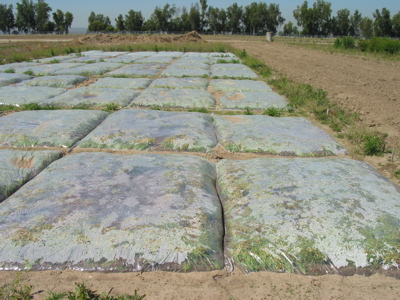- The cabbage seeds are sown in a seedbed and 4-6 week old seedlings are transplanting to the field.
- Raised beds of size 3 x 0.6 m and 10-15 cm in height are prepared.
- About 70 cm distance is kept between two beds to carry out intercultural operations such as weeding, etc.
- The surface of beds should be smooth and well levelled.
- Well-decomposed FYM @ 8-10 kg/square m is added at the time of bed preparation.
- Raised beds are necessary to avoid the problem of water logging in heavy soils.
- To avoid mortality of seedlings due to damping off, drenching of the beds with Thiophanate Methyl 70% WP @ (30g/15 litres of water) is effective.
Like and share with other farmers by clicking on the button below.
Share







